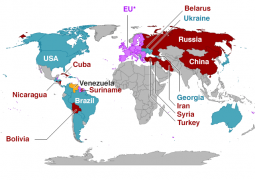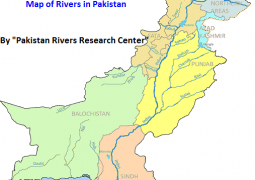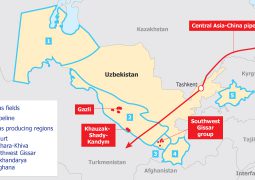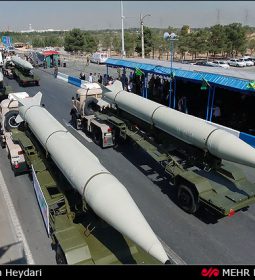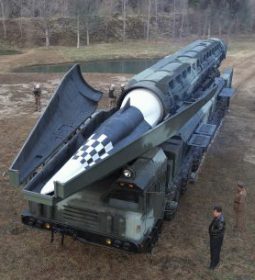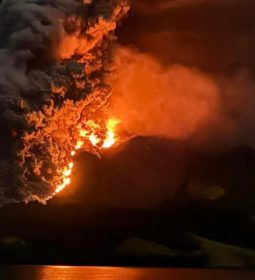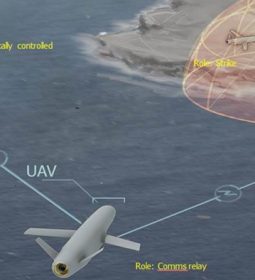Againstan in devastation trend: A former US Army base rots in the hands of overwhelmed Afghans
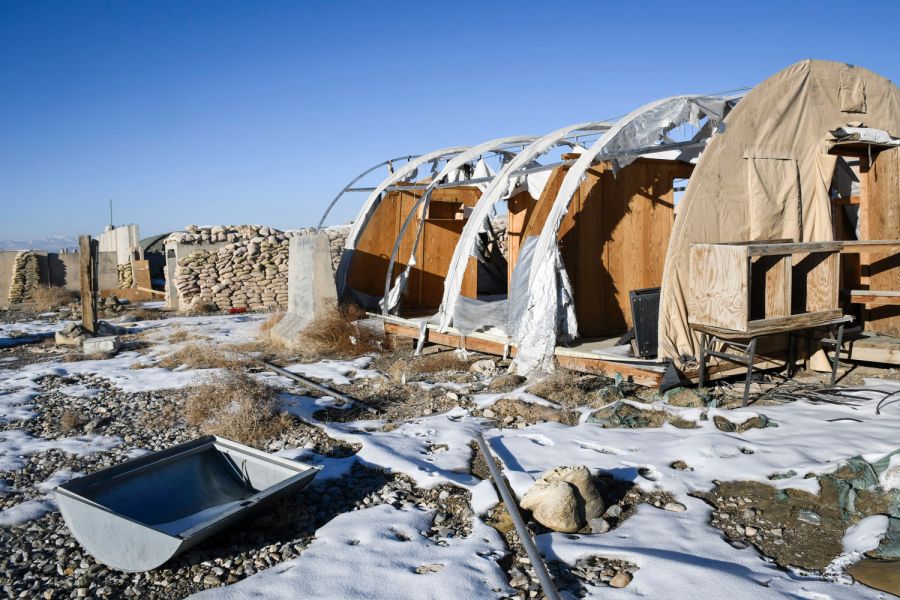
CAMP MAIWAND, Afghanistan — Limping as he climbed the stairs of a watchtower, the general turned his gaze south toward a once-sprawling base the Americans handed over to Afghan forces here in late 2014. Today much of it lies in ruins.
“Everything went to pieces,” Brig. Gen. Abdul Raziq Safi said of the base, which the Americans dubbed Forward Operating Base Shank. “Everything fell apart.”
After more than 17 years and $80 billion to build them up, Afghan security forces still struggle to secure their country, while corruption and other challenges strain their ability to maintain equipment and facilities provided by foreign forces, largely the United States.
FOB Shank’s fate — left to rot in the hands of overwhelmed Afghans — illustrates those challenges, as the White House reportedly mulls withdrawing thousands more troops, and as diplomats hammer out a peace settlement with the Taliban that could involve pulling out all foreign forces in the coming years.
Shank, located in eastern Logar province, is one of several former coalition bases throughout the country that have fallen into a state of disrepair, officials and observers told Stars and Stripes.
Once a strategic hub, Shank was a bulwark against Taliban enclaves in the lawless Tangi Valley to its west. An American-built runway allowed huge cargo planes to bring in troops, weapons and equipment.
Among the largest coalition bases at one time, it once hosted a 50-shop bazaar, four beauty salons, three restaurants and an academy to train soldiers in the counterinsurgency doctrine officials had hoped would end the war. It’s now a much different sight.
“It’s hardly recognizable,” said Army veteran Adam Cote, after viewing recent photos.
Cote led a company of engineers who demolished some of Shank as part of a large-scale “shooting withdrawal” in 2014, after the Obama administration ordered most U.S. troops out of the country by the end of that year. The “retrograde,” perhaps the largest in modern history, cost the Pentagon a reported $6 billion, though likely far more.
While still battling the Taliban, units like Cote’s rushed to tear apart over 500 bases, shuttering many and downsizing others to be given to the Afghan forces. Some $860 million in property was transferred by 2015, including four logistics hubs, 13 operating bases and hundreds of tactical outposts, the Defense Department has said. About $48 million more was destroyed or abandoned.
DOD kept tons of valuable material, hauled out in miles-long convoys that snaked at a glacial pace across eastern Afghanistan to Bagram Air Field to be redistributed elsewhere or sent home.
<element>
On its way out of the country, gear and supplies from remote eastern bases ended up at Shank, where troops picked through some 8,000 shipping containers, destroying, scrapping or giving away anything not worth risking American lives over. They left behind generators, air conditioners, furniture, buildings and empty shipping containers, a 2014 Army statement said.
“The end result was well worth the effort,” it said. “The Afghans will assume a functional operating base to immediately continue the war against transnational terrorists.”
‘Houses for demons’
Today, Shank’s perimeter walls still stand, tracing a long pill-shape with the Afghan Camp Maiwand on its northern end. About five miles away, the southern tip hosts a small U.S. Special Forces camp and an American outpost called Camp Dahlke West that’s been built up recently.
In between is a vast swath of deserted buildings and ruined tent villages that U.S. troops have dubbed “Zombieland.”
Afghan troops use a similar term: “Houses for demons.” It describes several former coalition facilities “because no one is using them,” said Atiqullah Amarkhail, a retired Afghan general.
Roaming packs of feral dogs now bed down at what was once Shank’s busy helicopter landing pad. Crows pick over scrap heaps amid metal tent skeletons whose torn plastic skins whip in the wind. Snow blows through collapsed walls of wood huts that once housed military offices.
As more Americans have been pushed out to Dahlke to advise front line units in the past year, U.S. troops have forayed into the wasteland to reclaim abandoned equipment, such as heaters and generators.
“You drive through and it’s like the ‘Walking Dead,’” 1st Lt. Tom Kopec, 26, a soldier in the 1st Cavalry Regiment, said in December.
Shank’s dilapidation was the result of resource limitations, claimed Safi, who heads a brigade in the army’s 203rd Corps. He has been fighting in Logar province for about 10 years and was posted at Shank in its prime.
Back then, its population of U.S. and coalition troops, civilians and contractors topped 8,000. Today, Safi’s troops here number one-fifth that, he said.
“We do not have the people to maintain the base — we have almost no people here,” Safi said via translator. “The rest are out at checkpoints.”

Even with a base full of troops, Safi couldn’t afford to maintain it, he said, claiming the facilities are too costly to run. Everything the Americans left requires power, he said, even bathroom door locks his troops have replaced with ordinary padlocks.
Despite $2 billion in U.S.-funded power projects, Afghanistan’s grid remains underdeveloped and unreliable, and bases often depend on electric generators to power lights, heaters and other equipment.
For just one of the big tents now rotting in Zombieland, the Americans would burn about 80 gallons of fuel a night, said Safi, who spent hours one January morning searching room to room in his headquarters for a working heater.
“Where are Afghans supposed to get that much fuel?” Safi asked. He said later: “The Americans, money has no value for them.”
In a tent on the nearby snow-covered U.S. camp that same weekend, the Americans cranked the heat so high that one soldier wore shorts and another offered guests cold drinks to cool off.
While DOD provides the Afghans more than a million gallons of fuel a year, Kabul often struggles with logistics challenges, as well as frequent theft of gas and other property.

Nothing lasts
It’s doubtful U.S. troops consumed as much fuel as Safi claimed, said Richard P. Mills, a retired general who led the Marines in southern Afghanistan from 2010 to 2011. But, he and others said, the coalition didn’t do enough to ensure it left behind rudimentary bases that the Afghans could maintain.
“We were being less than truthful with ourselves that the Afghans would be able to take care of these bases,” Mills said.
Shank’s condition bodes poorly for a time when foreign militaries and their financial backing are gone, said Vanda Felbab-Brown, senior fellow at the Washington-based Brookings Institution.
U.S. Central Command knew the Kabul government was “becoming overburdened by infrastructure” during the 2014 withdrawal, and NATO officials had been developing plans to help the security forces divest excess property, a group of CENTCOM logistics officers wrote in a 2016 review of the withdrawal effort.
<element>
The status of those plans is unclear. Officials with the U.S.-led NATO Resolute Support mission declined repeated requests to discuss Shank and other bases, saying only that “we’re always learning and adapting and changing our processes.”
Meanwhile, Safi’s troops had adapted Shank to their own needs, growing flowers in a former bus stop shelter and drying raisins on the roof of an old housing container.
For Drew Pham, a former cavalry officer who had passed through Shank while fighting in Wardak province about eight years ago, the base he saw in recent photos was a metaphor for the efforts of soldiers like him.
“Nothing we made over there seems to last,” he said.
Franz J. Marty and Zubair Babakarkhail contributed to this report.
- Previous Yazidis freed from Islamic State captivity in Syria, returned to Iraq
- Next India-Pakistan conflict: Jaish ‘revenge’ threat after IAF airstrike on terror camp keeps forces on alert



